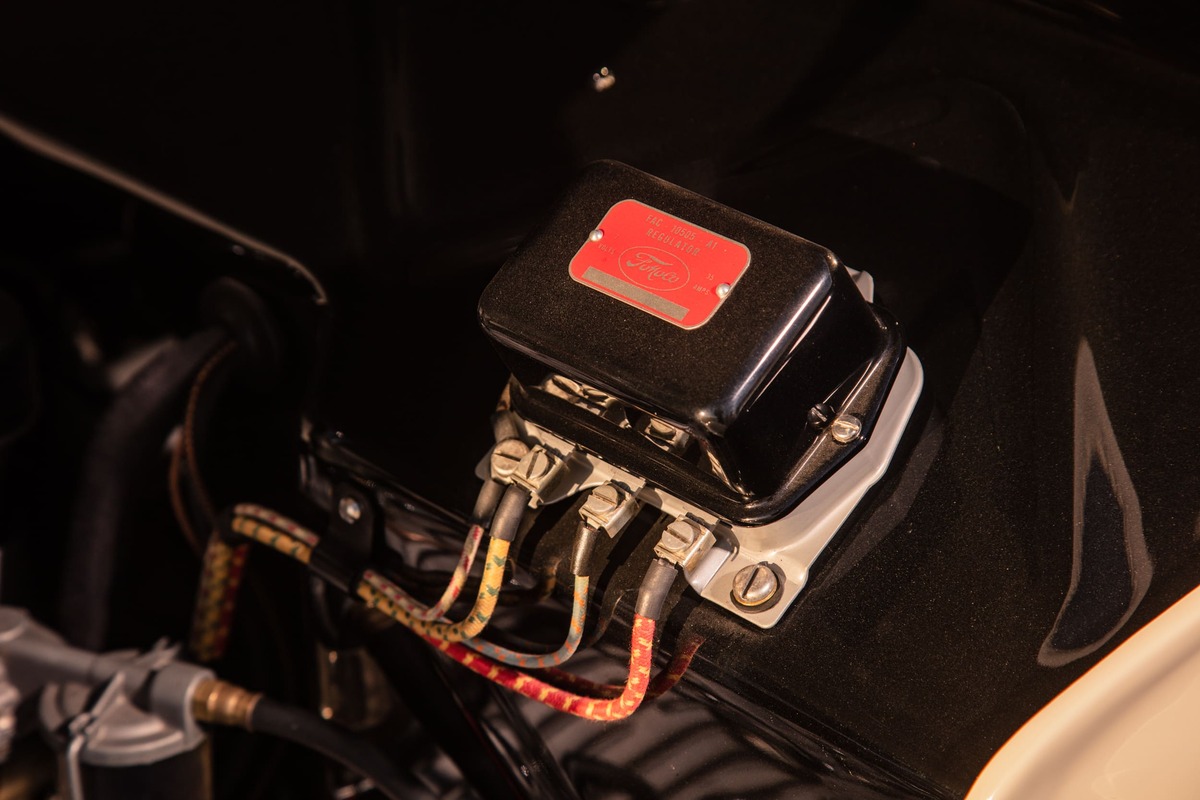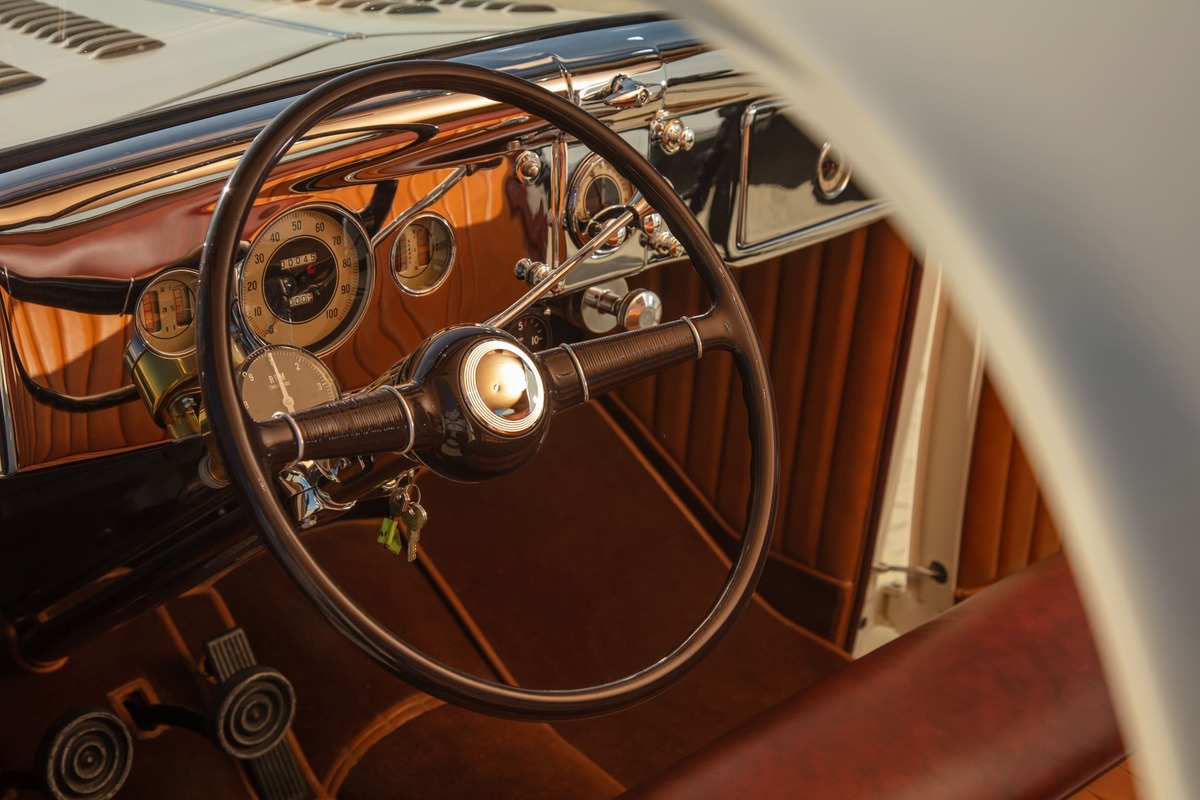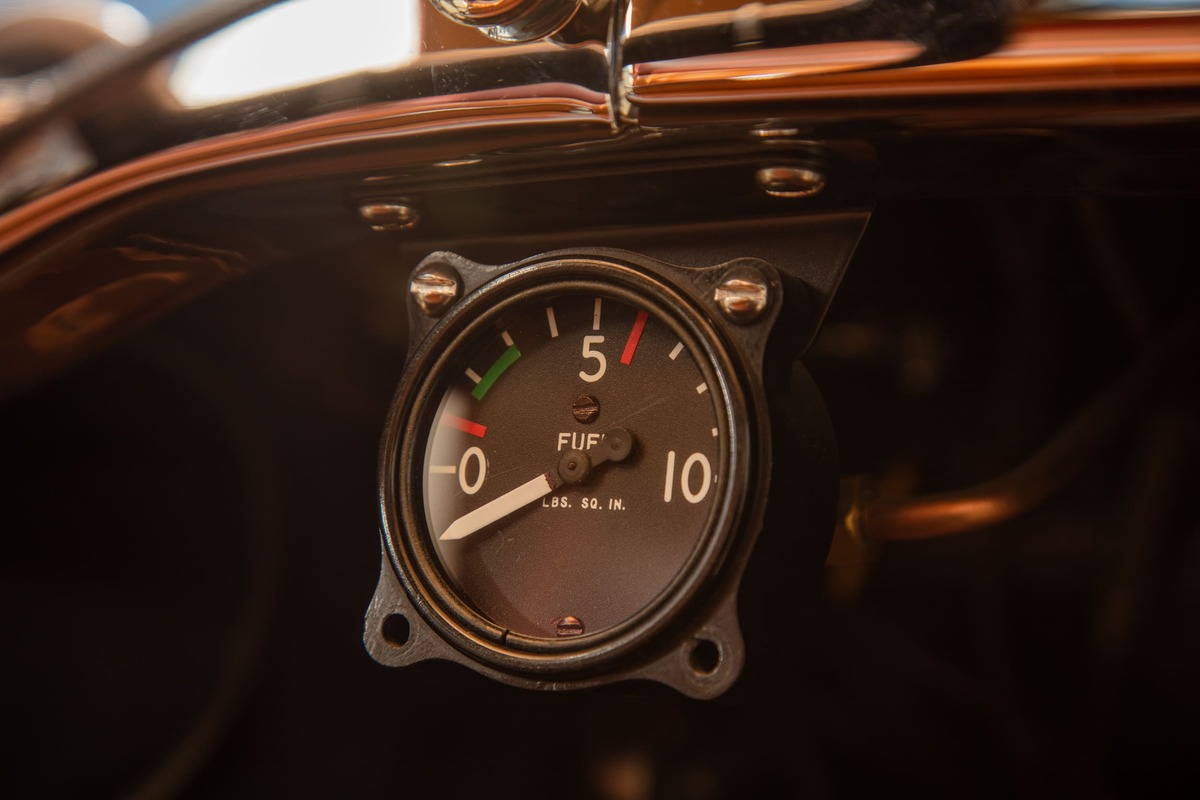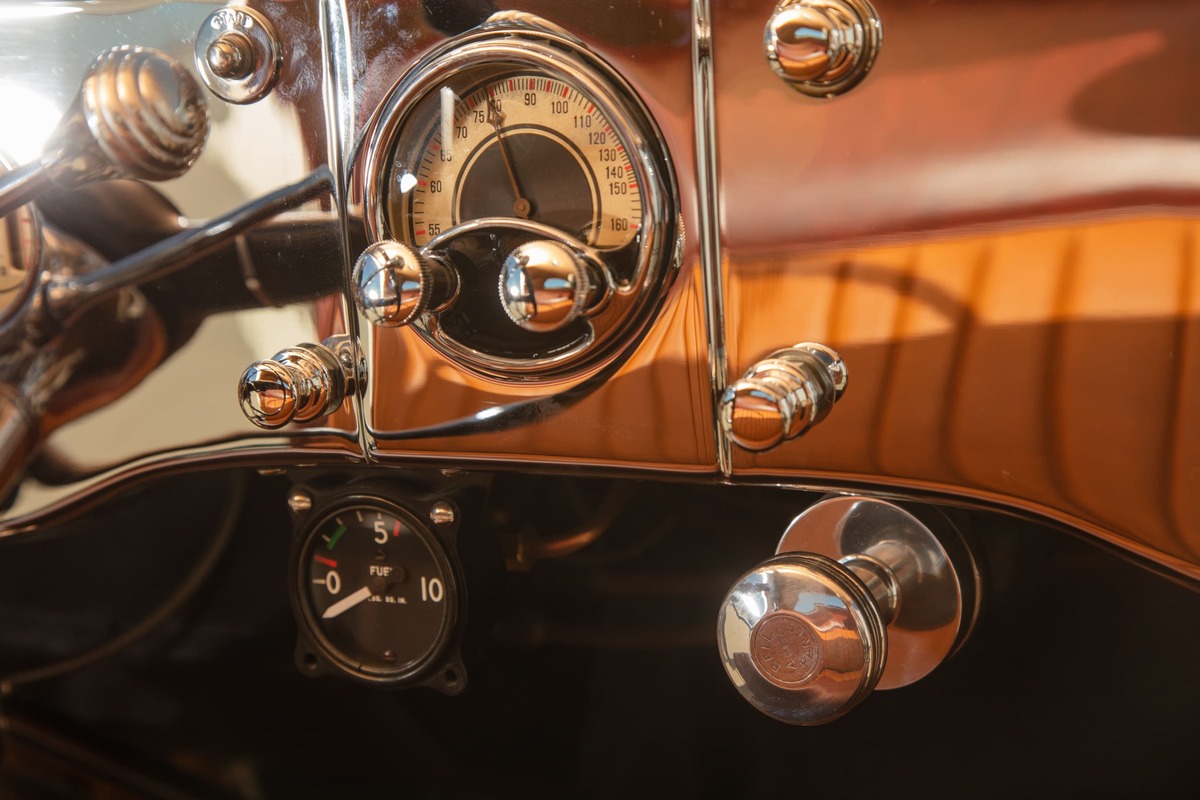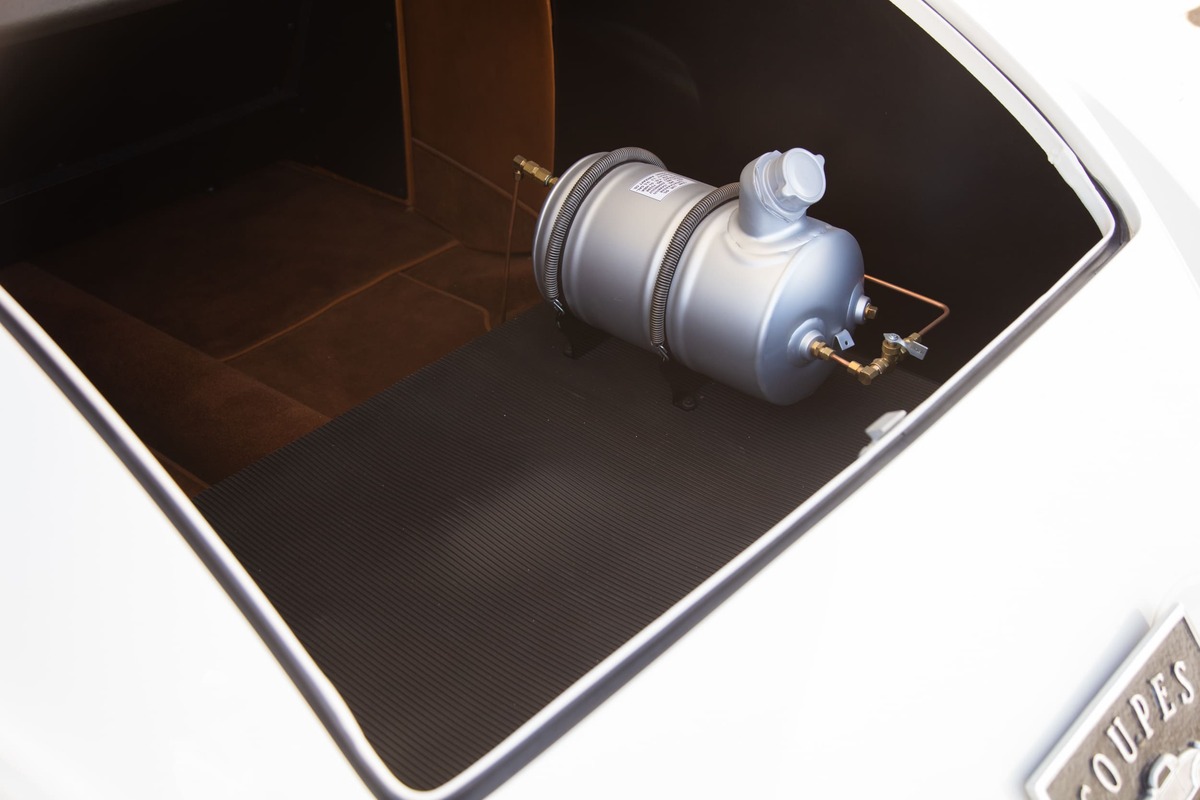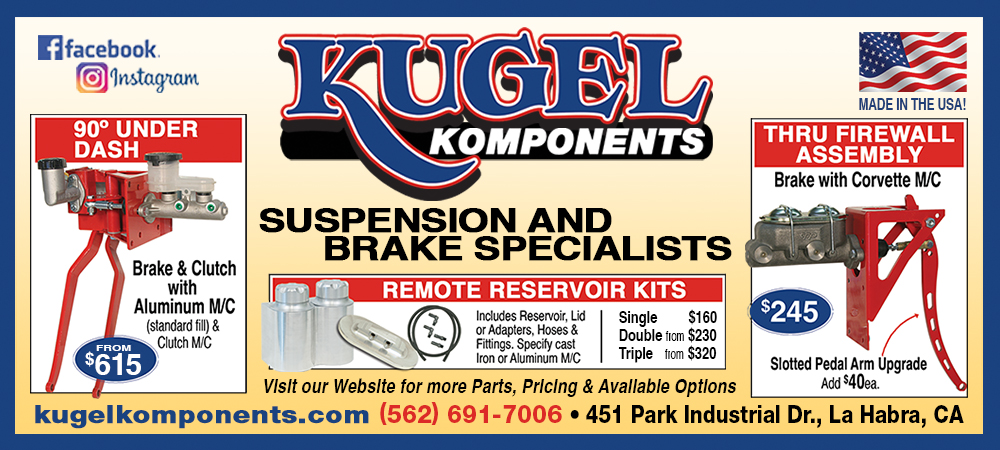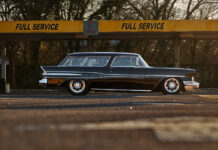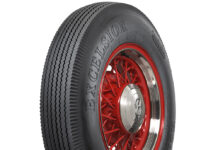The Pierson Brothers 1936 Coupe Did It All
By Gerry Burger – Photography by Tim Sutton
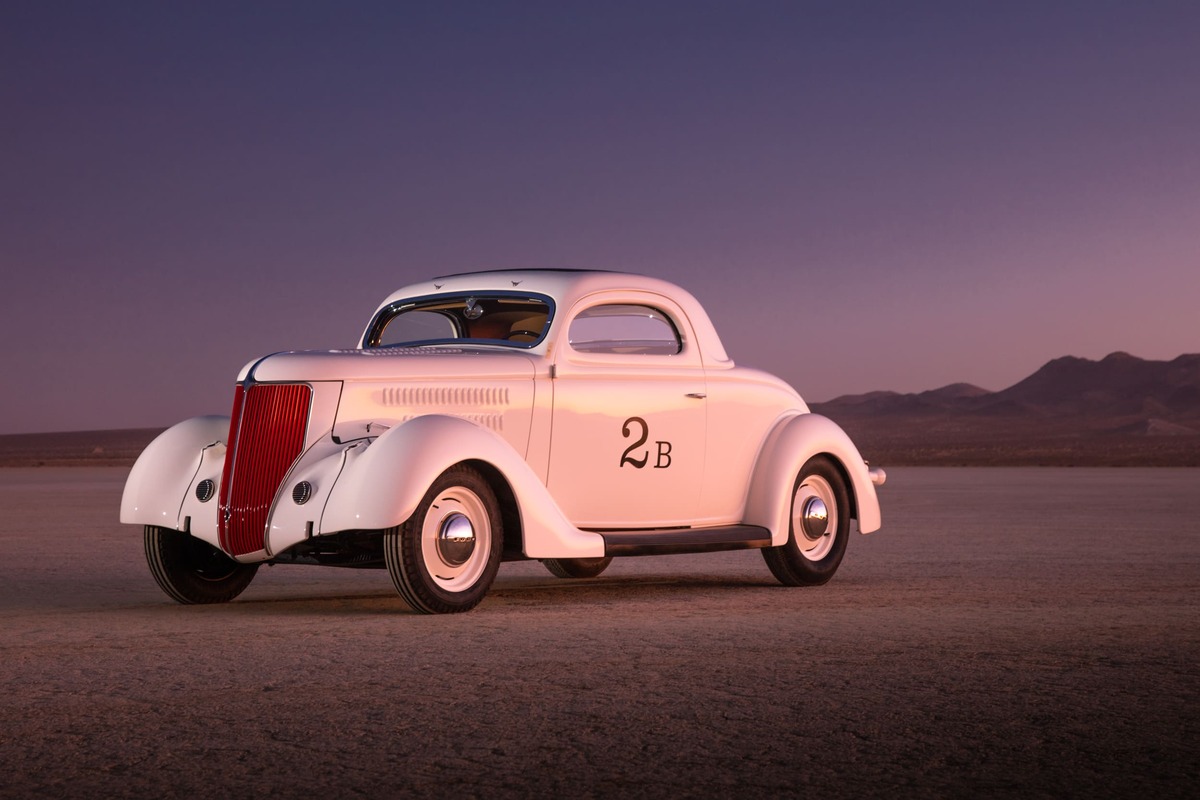
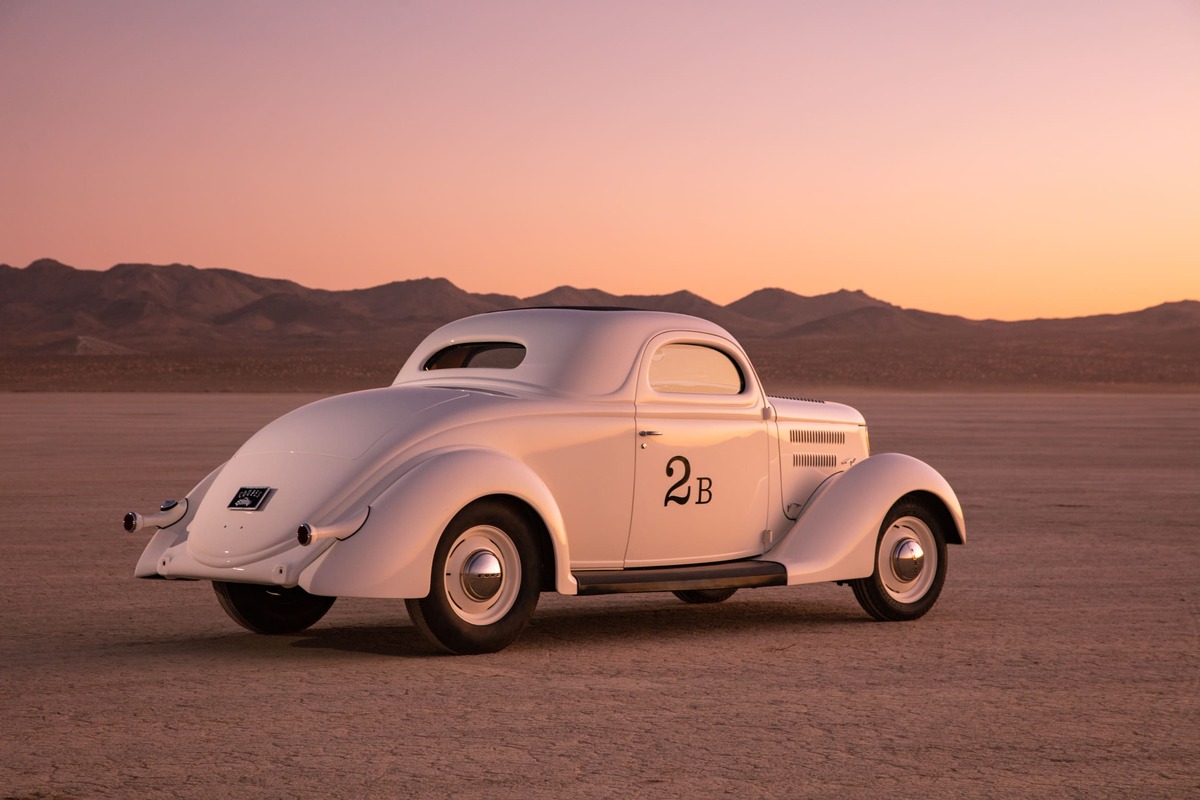
Jim Bobowski is an avid hot rod archeologist, constantly turning over automotive “rocks” in the hopes of discovering bits of hot rod history. Turns out he’s pretty good at it. Digging through swap meets, Internet sites, and old garages has garnered some interesting bits, but around the turn of the century Jim was in search of a historic hot rod, a car with provenance. And so, when he discovered the famed Bob Pierson 1936 Ford coupe was known to exist, he began the search. It turns out one of his greatest discoveries was hiding under a bright red paintjob and the owner, Frank Nay, along with several other veteran hot rodders, was well aware of this particular 1936 Ford coupe’s storied past. How aware, you ask? Well, he was there when this coupe was setting records on the dry lakes in the ’40s as a fellow member of the RTA. So, the good news is Jim had found the coupe, the bad news was Nay had no interest in selling the car. However, Jim and Nay became friends and stayed in touch.

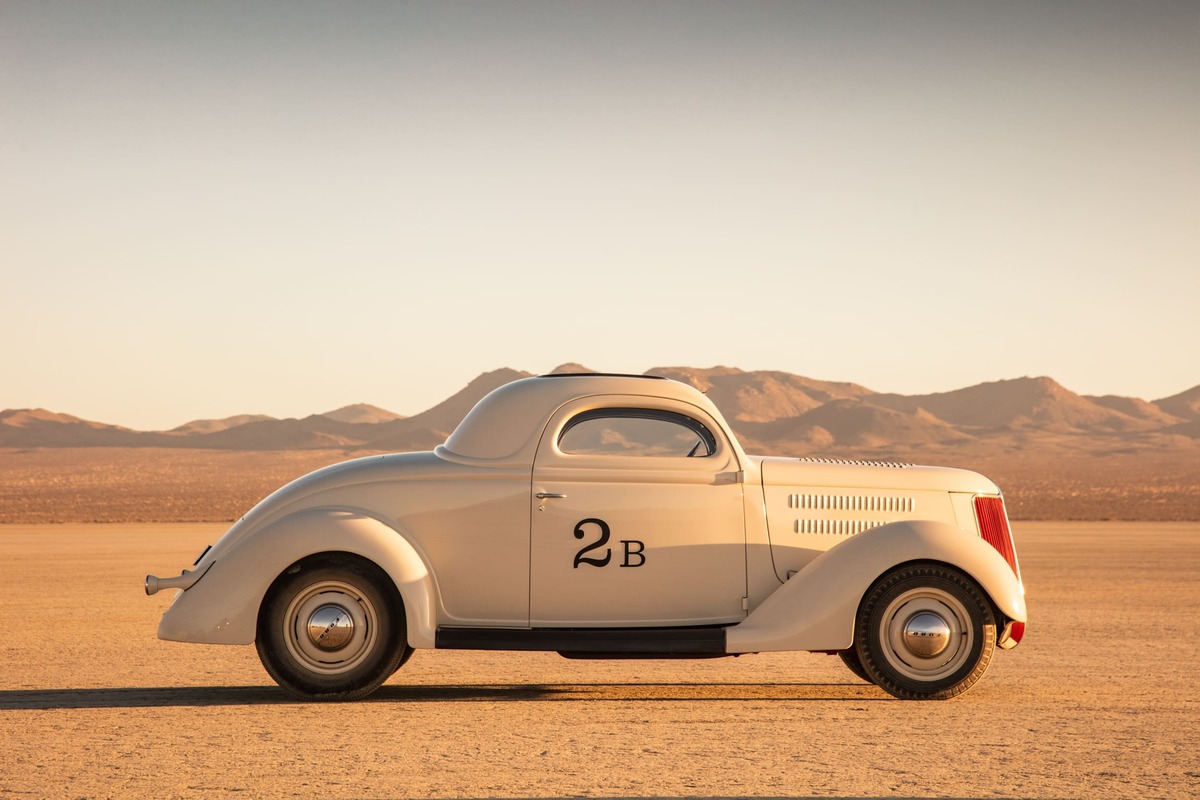
Jim continued researching all things Pierson brothers, somehow certain he would be the next owner. Much has been written about this car; here is just some of what he discovered. When it comes to historic hot rods, the Bob Pierson 1936 Ford coupe is among an elite group of cars defining the postwar era of hot rodding. For you see, among this coupe’s many claims to fame is the fact it has been a hot rod, almost non-stop, since 1945. While it was raced from 1948-1950 (with an amazing best top speed of 140.40), the car also saw constant street duty during that time and even flat towed the other famed Pierson brothers 2D 1934 coupe to Bonneville. It was not uncommon for the brothers to tow the 2D car to the dry lakes with the 1936 and then race both cars. Like so many hot rods of the day, this coupe served the Pierson brothers in street and race trim. Because style was important to the Pierson brothers, the Tokay White coupe carried stylish touches like 1937 DeSoto bumpers, dual Appleton spotlights, fender skirts, a slight down-in-the-back stance, and a bull-nosed grille. That was the first iteration. But, in 1949, Bob and Dick Pierson, with help from Harry Jones, chopped the top in the one-car garage behind their parents’ house. No exact record was kept on how much metal was removed from the roofline (it’s in the neighborhood of 3 inches), but virtually every hot rodder agrees it is one of the finest silhouettes to ever grace a 1936 Ford. The fact that the roof insert was not filled during the chop became a defining characteristic of the coupe. Like most hot rods, the car continued to evolve and soon the stock hood panels gave way to louvered side panels. Four rows of louvers evacuated air through the top of the hood and the once-chrome grille was now painted red to match the steel wheels. The coupe earned its last timing slip in 1950. By the early ’50s the Pierson brothers had sold their 1934 race car. Bob was working in the aviation industry, driving a nice, new, respectable Cadillac. Dick drove the 1936 for several more years before selling it around 1953 to Don Rousch. Rousch sold the coupe to Larry Howes who in turn sold it to Florence Nichols in 1963. Around this time things get a little fuzzy, but in 1965 the coupe had fallen into disrepair and, as author Don Montgomery documented, Bill King, a former member of the Glendale Coupes and Roadsters, purchased the car in 1965 for a mere $125, and yes, King realized this was his old friends’ car.
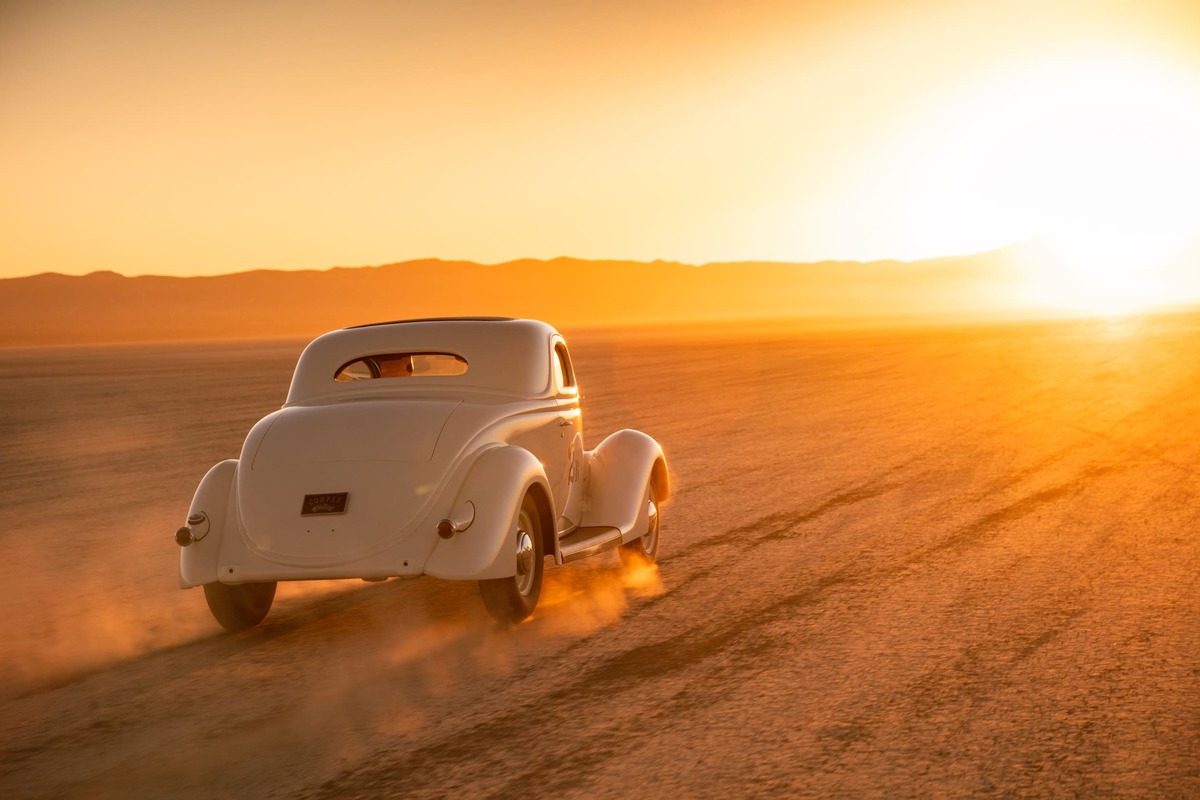

The car would rest in King’s driveway and garage for many years before he got around to building the coupe for modern street duty. The old race chassis was swapped out for a Total Cost Involved frame complete with IFS, and underhood a small-block Chevy carried early finned aluminum Edelbrock valve covers, a subtle nod to the coupe’s DNA. It was a very nice car, finished in bright red paint, with a mix of era-popular billet wheels and interior handles but with the body largely unchanged. The car even won a Goodguys Best Top Chop award, proving proper profiles never grow old. The spare tire and signature chrome dashboard were changed and the outside door handles were shaved, but the basic car was unchanged from the ’40s. When King died, fellow Road Kings member Frank Nay purchased the car. Nay continued to make improvements on the coupe and used it as a modern street rod. That brings us well into the new millennium, when in 2010 Jim Bobowski’s phone rang. It was his friend, Nay, and he was ready to sell.


Jim had busied himself researching the car and he knew if he ever owned the car it would be returned it to its 1949 iteration. But first this coupe would be shown in red paint one last time. The Grand National Roadster Show (GNRS) was having a Custom Retrospective in 2011 and Jim decided to backdate the coupe for that show. With help from Jimmy White of Circle City Hot Rods they managed to chrome the windshield frame, locate and mount genuine 1937 DeSoto bumpers, Appleton spotlights, fender skirts, and adjust the ride height to a slight tail-dragger angle. The car was well received. It seems there is nothing the Pierson Brothers coupe can’t do; street car, lakes class record holder and salt flat racer, tow car, and now custom show car.


After the GNRS the coupe was brought back to New Jersey where Jim purchased a genuine vintage hot rod frame, complete with I-beam suspension and 1940 Ford drum brakes to replace the modern Total Cost Involved chassis. Jim and fellow hot rodder Darrell Falkinburg set about stripping the coupe to bare metal. Under that bright red paint they found the body was in exceptional condition for a 78-year-old hot rod. The initial plan was to perform all work on the coupe in Jim’s home shop—after all, the car was originally built by two brothers in a home garage. The longer they worked on the car, the more Jim felt a world class hot rod deserved a world class restoration. After talking to fellow rodders and several shops, the car ended up in the capable hands of Bill Ganahl at his South City Rod & Custom shop. I say this with all due respect for all involved, the coupe was subsequently subjected to a maniacal restoration. “Attention to detail” doesn’t begin to describe the level of accuracy on this car. Amazing effort was made to retain as much of the original car as possible. Patch panels were made from donor 1936 Ford panels when possible, and fabricated sheetmetal was all 19-gauge to perfectly match body metal thickness. All welds were metal-finished both sides, meaning some of Ganahl’s best work is impossible to see. Again, much has been written about this car, so detailed restoration stories are out there and worth reading. Stan Vermiel spun the wrenches on the full-race flathead. The fresh Tokay White paint was applied by Joe Compani, while the task of duplicating the Runyan interior went to Chris Plante, just to name a few of the craftsmen involved. The backdate restoration was a two-year project, completed just in time for the 2015 GNRS.


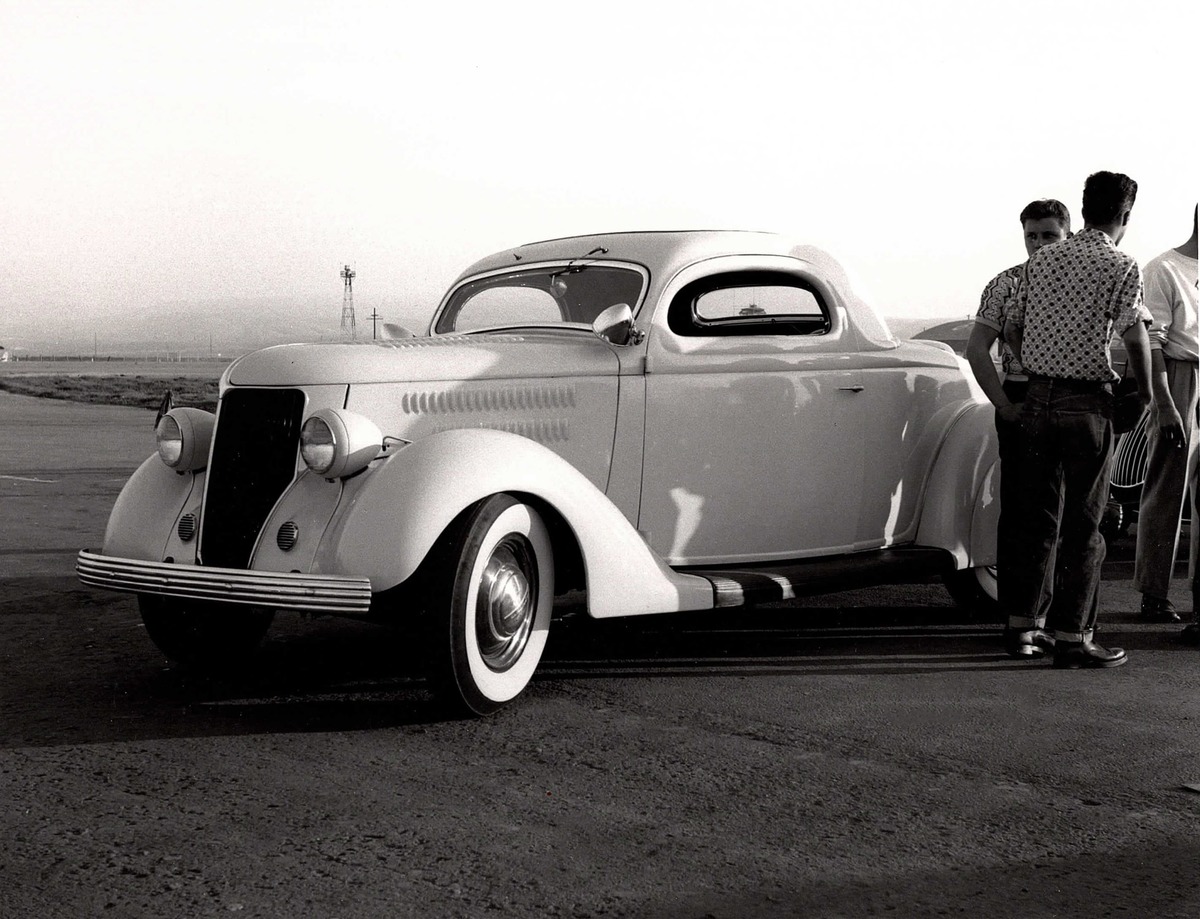

Jim drove the Pierson Brothers 1936 coupe onto the GNRS floor, marking the end of one journey and beginning of another. Set up day was a bit surreal and response to the car was overwhelming. Sadly, both Bob and Dick Pierson were no longer with us to see the coupe return to the show floor, but Dick’s widow, Helen, came to the show resplendent in her bright red vintage Edelbrock jacket. Helen had dated Dick in this very car. Veteran hot rodders stopped by all weekend to share stories of the car and the glory days of dry lake racing. Once again, the coupe proved to be a winner, taking home the prestigious 2015 Bruce Meyer Preservation Award.



Next, the coupe was displayed at the Sacramento Autorama and then Jim graciously loaned the coupe to the NHRA Museum. The car remained there for about two years before it was brought back to Jimmy White for brief storage, because Jim had other plans for the iconic coupe. The car had been brought back to exacting street trim by the team at South City Rod & Custom, now Jim and White would put the car in perfect race trim at Circle City Hot Rods. Numbers were applied; headlights, spotlights, and the tucked spare tire removed; and it was time to head to the dry lakes.

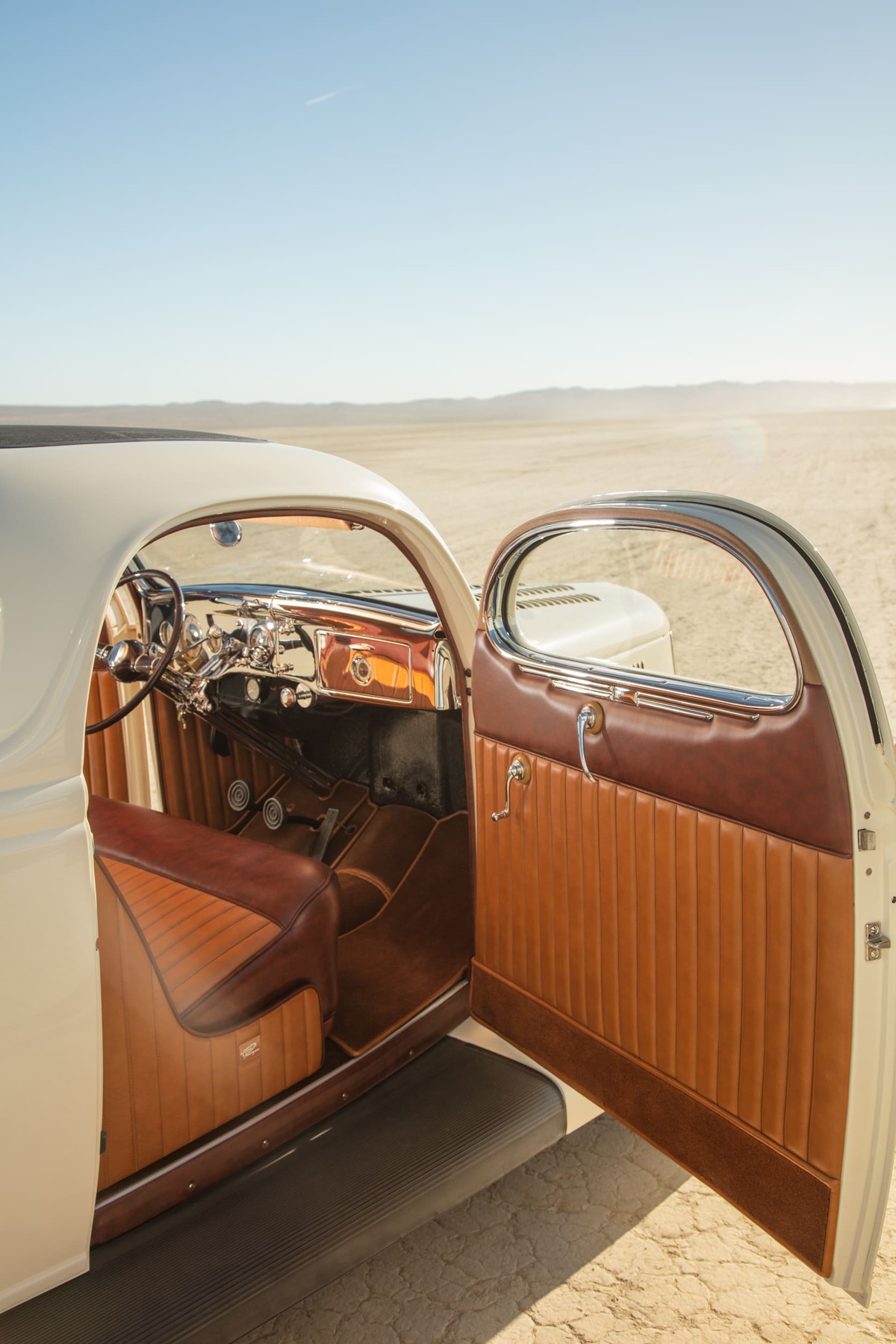
Our photographer, Tim Sutton, captured the coupe on the cracked lakebed surface. While the car was stunning on the show floor and a perfect fit in the NHRA Museum, it was here, on this timeless patch of dried dirt, that the coupe looked absolutely at home. While this was a homecoming for the coupe, it was Jim’s first time on the lakebed. The glamour shots were taken and finally the time had come. Jim slid behind the wheel, the click of a vintage lap belt, the turn of a key, and a push of the starter button fired the full-race Flattie to life. Slowly he turned and headed across the lakebed, gradually gaining speed. Sights, sounds, sensations, vibrations, all contribute to the moment driving any race car, but suddenly it was 1949 all over again. A creamy coupe was kickin’ up a rooster tail of dust and somewhere two brothers were smiling. MR

